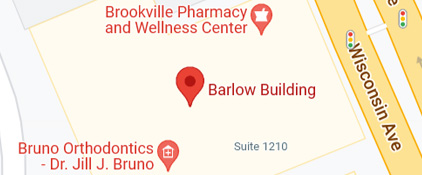

Knee Implants
Knee implants are artificial devices that form the essential parts of the knee during a knee replacement surgery. The knee implants vary by size, shape, and material. Implants are made of biocompatible materials that are accepted by the body without producing any rejection response. Implants can be made of metal alloys, ceramics, or plastics, and can be joined to the bone. The metals used include stainless steel, titanium, and cobalt chrome; whereas, the plastic used is polyethylene.
Components of a Knee Implant
The components of a knee implant replicate the natural shape and structure of the knee joint. The components used may depend on the size of the body and vary from patient to patient. There are 3 components in a knee implant:
- Femoral component: The femoral component is generally made of metal and curves around the thighbone. It has a channel that allows the kneecap to move up and down as the knee is in motion.
- Tibial component: The tibial component is usually a flat metal platform with a plastic (polyethylene) cushion. The metal portion attaches to the tibia and has a stem that goes into the tibia for stability. The plastic portion, also known as a spacer, acts as a cushion between the femoral and tibial metallic components.
- Patellar Component: The patellar component is a dome-shaped device made of polyethylene that replicates the patella.
Types of Knee Implants
The type implant used may depend on the patient’s bone quality and the health of the ligaments surrounding the knee. Based on the patient’s age and activity level, there are different types of knee implants used in knee replacement surgery.
- Fixed bearing implants: The polyethylene part of the tibial component is attached firmly to the metal platform. The femoral component moves on the cushion provided by the polyethylene. Fixed bearing implants are generally used in less active and elderly patients.
- Mobile bearing implants: The polyethylene part of the tibial component can rotate inside the metal part, and therefore provides greater mobility to patients. Mobile bearing implants are designed to bear greater stress compared to fixed bearing implants, and require greater support from the ligaments surrounding the knee. Mobile bearing implants are preferred in generally young and active patients. Medial pivot implants are a type of mobile bearing implants that can twist, bend, rotate, flex, and perform all the functions of a natural knee.
- Posterior cruciate ligament (PCL) substituting implants: The posterior cruciate ligament stabilizes the knee against forces that push the tibia towards the femur. PCL substituting implants are used in patients with an injured PCL. The PCL substituting implants are provided with a raised surface on the cushion of the tibial component, which acts as a center post and fits into a cam in the femoral component and duplicates the actions of the injured PCL.
- Posterior cruciate ligament (PCL) retaining implants: PCL retaining implants are used in patients who have a healthy posterior cruciate ligament. Unlike PCL substituting designs, PCL retaining implants do not have the center post and cam design. The femoral and tibial components have grooves to hold the posterior cruciate ligament.
- Custom knee implants: For patients with smaller bone structure, the sizes of the implants required may vary. Gender specific implants and narrow femur implants, can provide better alignment of the bones, and may be used depending on the preference of the orthopedic surgeon.
Types of Fixation
Depending on the age and activity level of the patient undergoing knee replacement surgery, an orthopedic surgeon may recommend any of the available three types of implant fixation.
- Cemented Fixation: The components of the artificial joint are held together with special bone cement. The bone cement is made from a special polymer called polymethylmethacrylate (PMMA). Cemented fixation is an option for less active patients. Too much stress on cemented fixation can lead to fatigue fractures.
- Cementless Fixation: Cementless implants are coated with a porous material. They attach to the new bone that grows to the surface of the implant via bone ingrowth. The implant may be fixed using screws or pegs until bone ingrowth. Cementless fixation is an option for more active patients with good bone quality.
- Hybrid Fixation: Hybrid fixation uses a combination of cemented and cementless fixation. The tibial and patellar components are fixed with cement, and the femoral component is fixed without cement.














